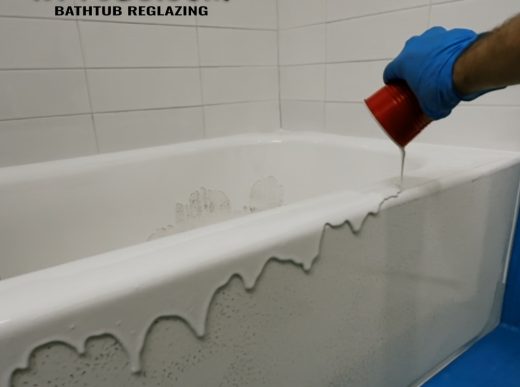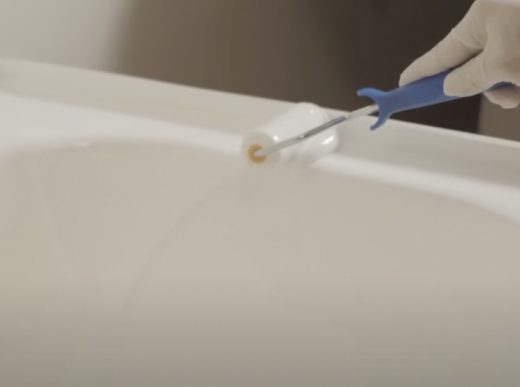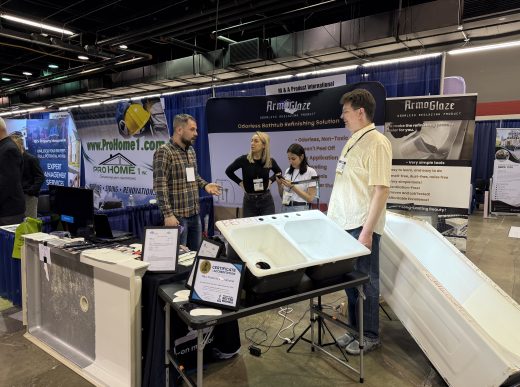Introduction
As part of my professional evaluation work in the field of bathtub refinishing, I regularly assess failed coatings to help raise industry standards and educate both clients and technicians. This review focuses on a real-life case where a spray-on bathtub coating failed within just two months of application.
Case Overview
• Location: Brooklyn, NY
• Client Complaint: Peeling, fading, and discoloration near the drain and corners
• Time Since Application: 2 months
• Coating Method Used: Spray-on enamel
Findings and Technical Issues
1. Excessively Thin Coating Layer
The original coating was applied with a sprayer, resulting in an extremely thin film — in some areas less than 0.1 mm. This type of application cannot withstand daily water exposure, friction, or cleaning agents. The surface showed visible wear and patchiness, especially in the middle of the tub.
2. Poor Adhesion
The coating delaminated easily, especially around the drain area and edges. During removal, it peeled off in large pieces, confirming that no mechanical abrasion (such as sanding or grinding) was performed prior to application. The surface underneath was still glossy — a clear sign of improper preparation.
3. Material Incompatibility
Spray-on enamels are not designed to function in high-moisture environments without proper primers or controlled curing. The result is rapid loss of adhesion, discoloration, and structural failure — all of which occurred here in under 60 days.
Photo Documentation
Before:
The first image shows the condition of the tub after just two months. The coating is peeling in multiple areas, especially around the drain. Dirt has accumulated where the coating lifted, and discoloration is visible along the tub floor.
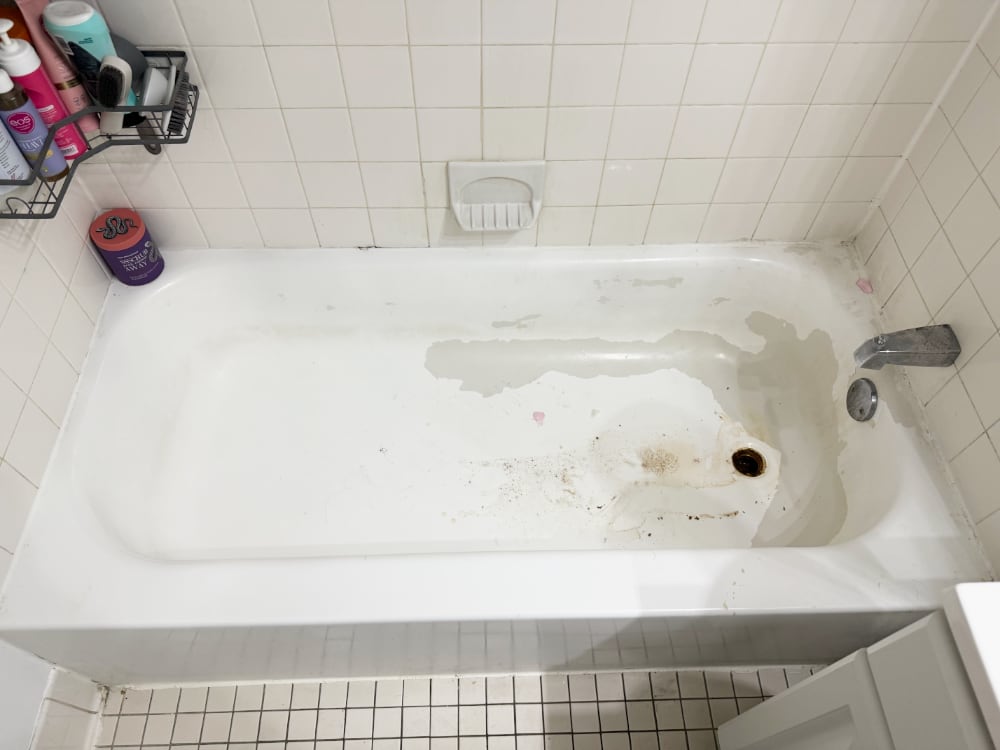
After:
The second image shows the tub after professional restoration using a pour-on application method. The new surface is glossy, seamless, and fully bonded, with proper edge sealing and full-body coverage.
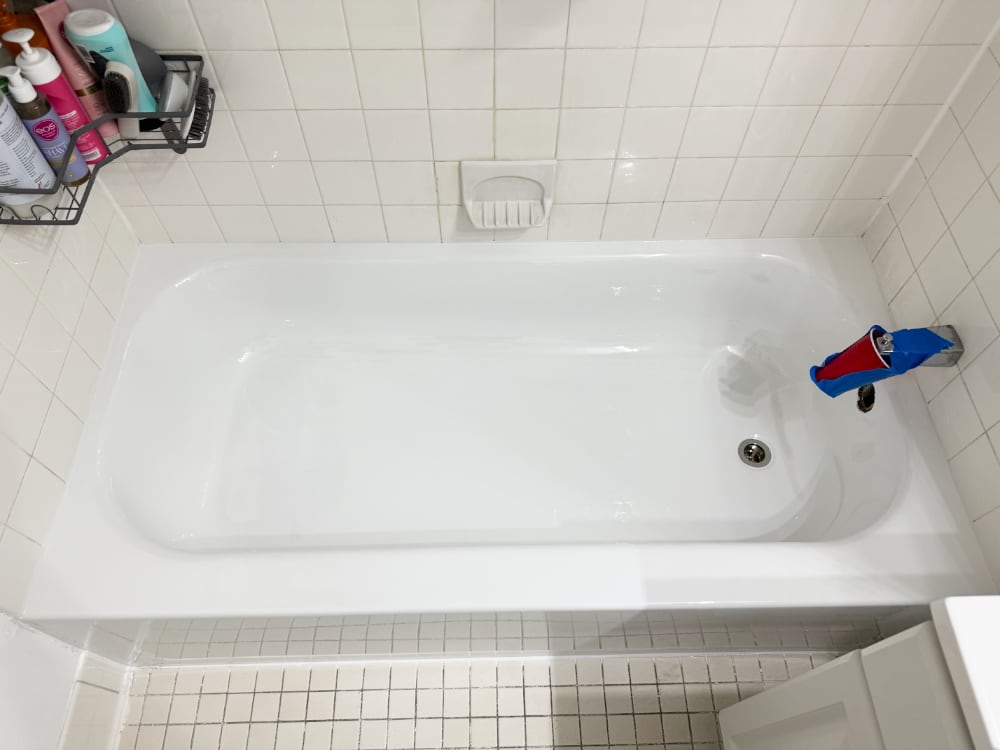
Expert Assessment
This bathtub restoration was executed with a non-durable method and without following essential preparation steps. I rate the original job as technically unsatisfactory, with critical errors in:
- Surface preparation
- Material choice
- Coating thickness
- Edge treatment
Had a proper pour-on system been used, along with standard surface preparation, the result would have been significantly more durable and visually consistent.
Conclusion
This case highlights the risks of shortcut methods in bathtub refinishing. Spray-on coatings may seem convenient, but without proper technique and materials, they often fail rapidly. Evaluations like this aim to educate both professionals and clients on the importance of long-term performance, not just appearance.

